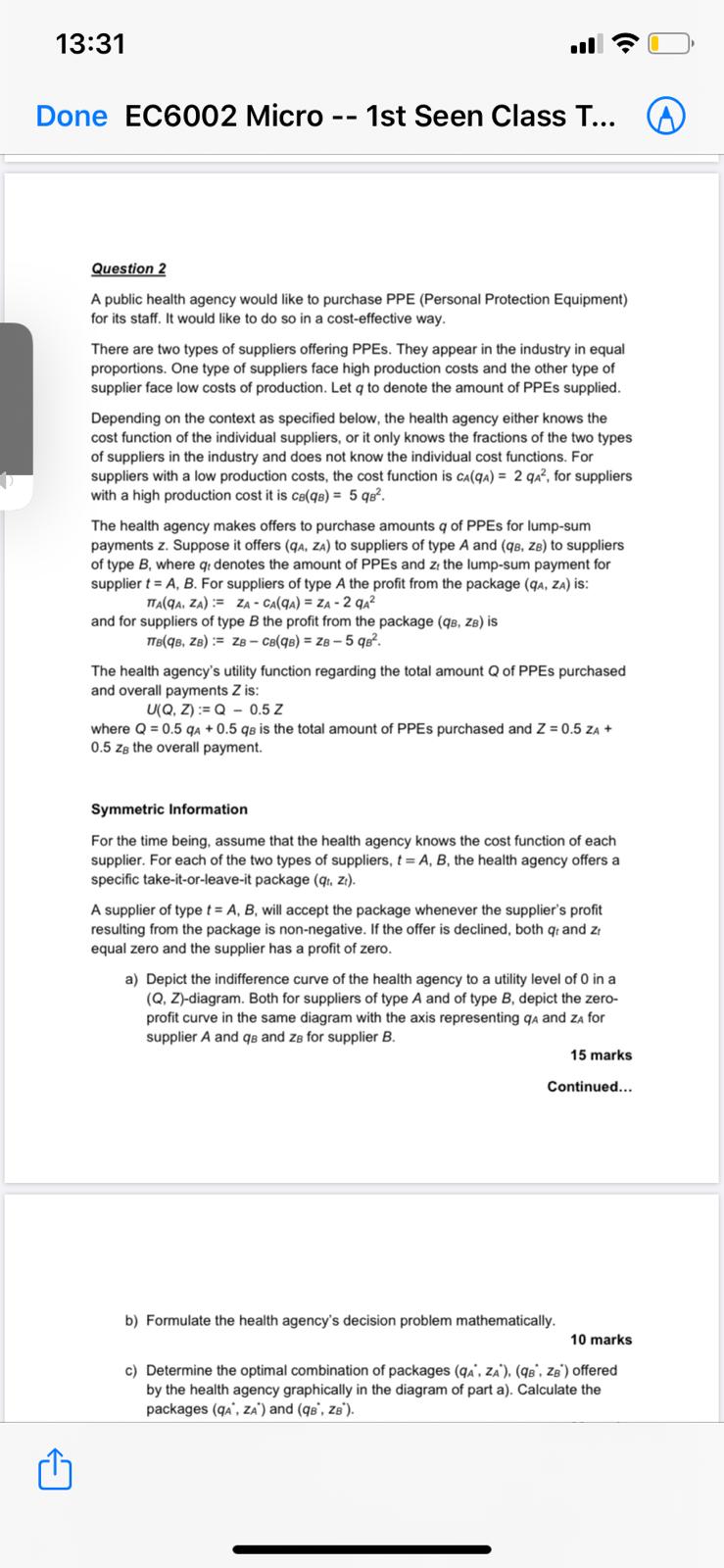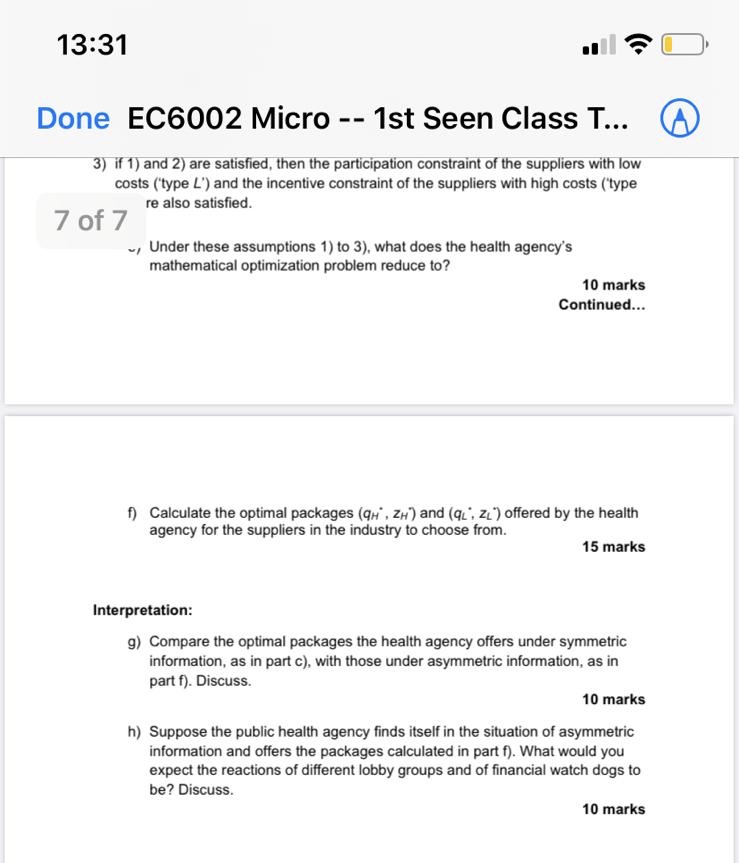Unable to type symbols so please see attached images
13:31 Done EC6002 Micro -- 1st Seen Class T... Question 2 A public health agency would like to purchase PPE (Personal Protection Equipment) for its staff. It would like to do so in a cost-effective way. There are two types of suppliers offering PPEs. They appear in the industry in equal proportions. One type of suppliers face high production costs and the other type of supplier face low costs of production. Let q to denote the amount of PPEs supplied. Depending on the context as specified below, the health agency either knows the cost function of the individual suppliers, or it only knows the fractions of the two types of suppliers in the industry and does not know the individual cost functions. For suppliers with a low production costs, the cost function is CA(qA) = 2 qa?, for suppliers with a high production cost it is ce(q8) = 5 q8. The health agency makes offers to purchase amounts q of PPEs for lump-sum payments z. Suppose it offers (qA, ZA) to suppliers of type A and (qs, ZB) to suppliers of type B, where qi denotes the amount of PPEs and z: the lump-sum payment for supplier t = A, B. For suppliers of type A the profit from the package (qA, ZA) is: TTA(qA. ZA) = ZA - CA(qA) = ZA - 2 q42 and for suppliers of type B the profit from the package (qs, ZB) is ITB(qB, ZB) := Z8 - CB(q8) = 28 - 5 98. The health agency's utility function regarding the total amount Q of PPEs purchased and overall payments Z is: U(Q, Z) := Q - 0.5 Z where Q = 0.5 qA + 0.5 qs is the total amount of PPEs purchased and Z = 0.5 ZA + 0.5 zs the overall payment. Symmetric Information For the time being, assume that the health agency knows the cost function of each supplier. For each of the two types of suppliers, t = A, B, the health agency offers a specific take-it-or-leave-it package (qt. z:). A supplier of type t = A, B, will accept the package whenever the supplier's profit resulting from the package is non-negative. If the offer is declined, both q, and z equal zero and the supplier has a profit of zero. a) Depict the indifference curve of the health agency to a utility level of 0 in a (Q, Z)-diagram. Both for suppliers of type A and of type B, depict the zero- profit curve in the same diagram with the axis representing qA and ZA for supplier A and qs and zs for supplier B. 15 marks Continued... b) Formulate the health agency's decision problem mathematically. 10 marks c) Determine the optimal combination of packages (qa', ZA'), (qs). Zs') offered by the health agency graphically in the diagram of part a). Calculate the packages (qA', ZA') and (q8 , ZB').13:31 Done EC6002 Micro -- 1st Seen Class T... 3) if 1) and 2) are satisfied, then the participation constraint of the suppliers with low costs (type L') and the incentive constraint of the suppliers with high costs (type 7 of 7 re also satisfied. w/ Under these assumptions 1) to 3), what does the health agency's mathematical optimization problem reduce to? 10 marks Continued... f) Calculate the optimal packages (qH , ZH ) and (qL', ZL') offered by the health agency for the suppliers in the industry to choose from. 15 marks Interpretation: g) Compare the optimal packages the health agency offers under symmetric information, as in part c), with those under asymmetric information, as in part f). Discuss. 10 marks h) Suppose the public health agency finds itself in the situation of asymmetric information and offers the packages calculated in part f). What would you expect the reactions of different lobby groups and of financial watch dogs to be? Discuss. 10 marks








